Bean Gilsdorf
The operation is actually quite simple: As a person’s image is repeated and repeated in the media, they seem to become less a flesh-and-blood human and more of a diaphanous cultural figure, as though every instance of their image were transparent and layered on top of all of the other instances, to eventually comprise a loose set of associations instead of a definite, reliable, specific picture.
America loves to produce and export these sites of cultural projection, floating signifiers upon which to propose any number of myths and fantasies. This series is a case study: There is no real “Elvis Presley,” only a set of symbolic models: a musical savant, a rags-to-riches fairy tale, a Rorschach-like embodiment of sexuality, a saga of self-destruction, a white appropriation of Black culture…
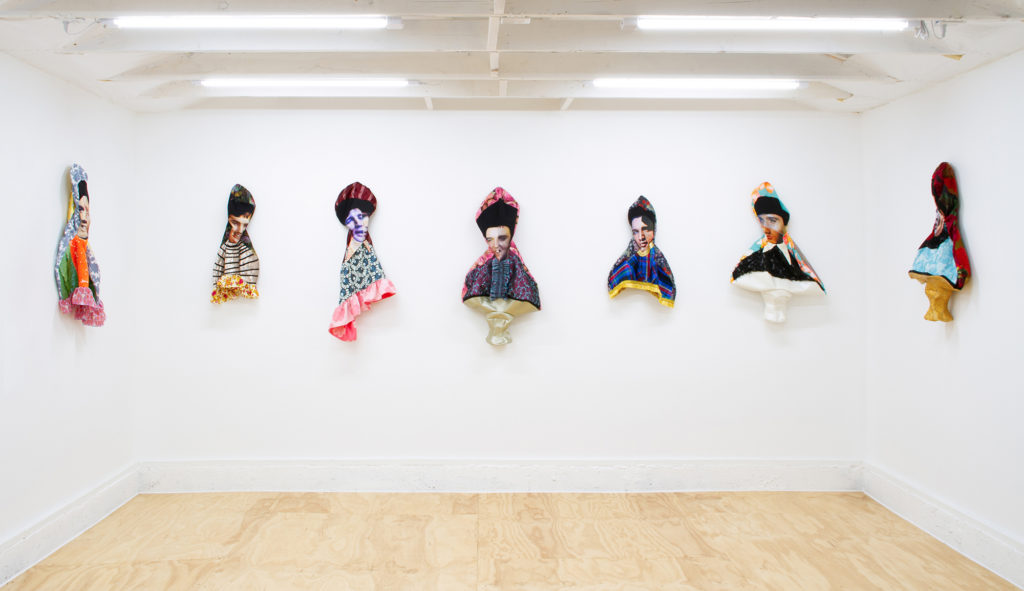
All Shook Up, installation view (front), 2020.
“All Shook Up” was initially inspired by the Roman marble busts in the Victoria and Albert Museum in London, and fed by a line in a review by Amy Taubin in Artforum: “Paralleling Elvis’s trajectory is the story of the rise of America in the first years after World War II and then its long decline, as the dream of democracy became the nightmares of imperialism and global capitalism.” Here, along a continuum of nostalgia and foreboding, Elvis bulges and sags, distorted and exhausted.
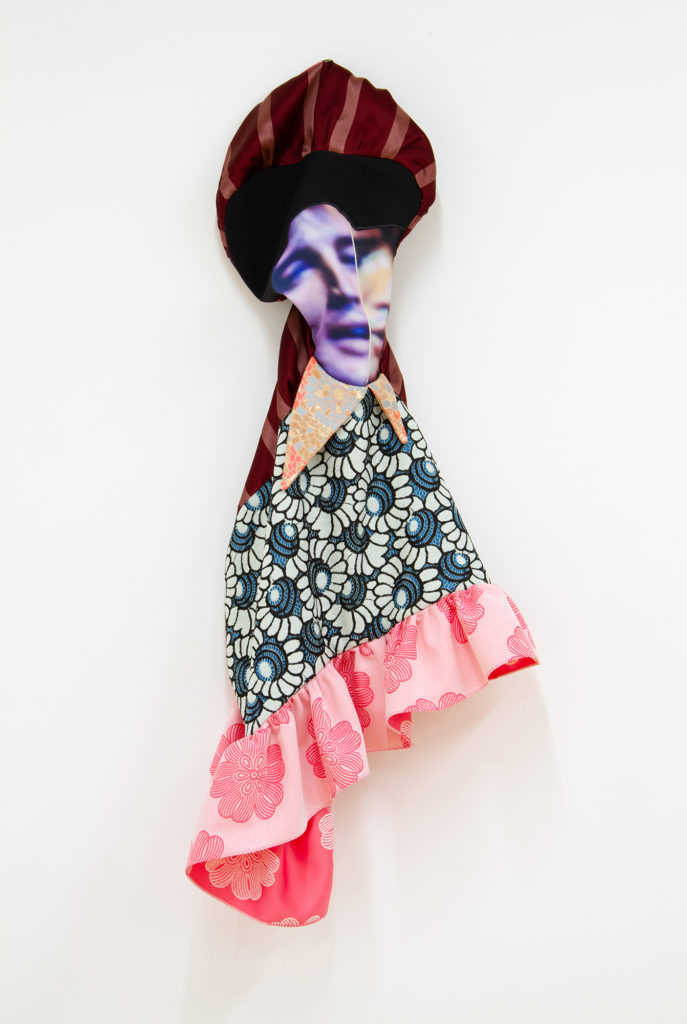
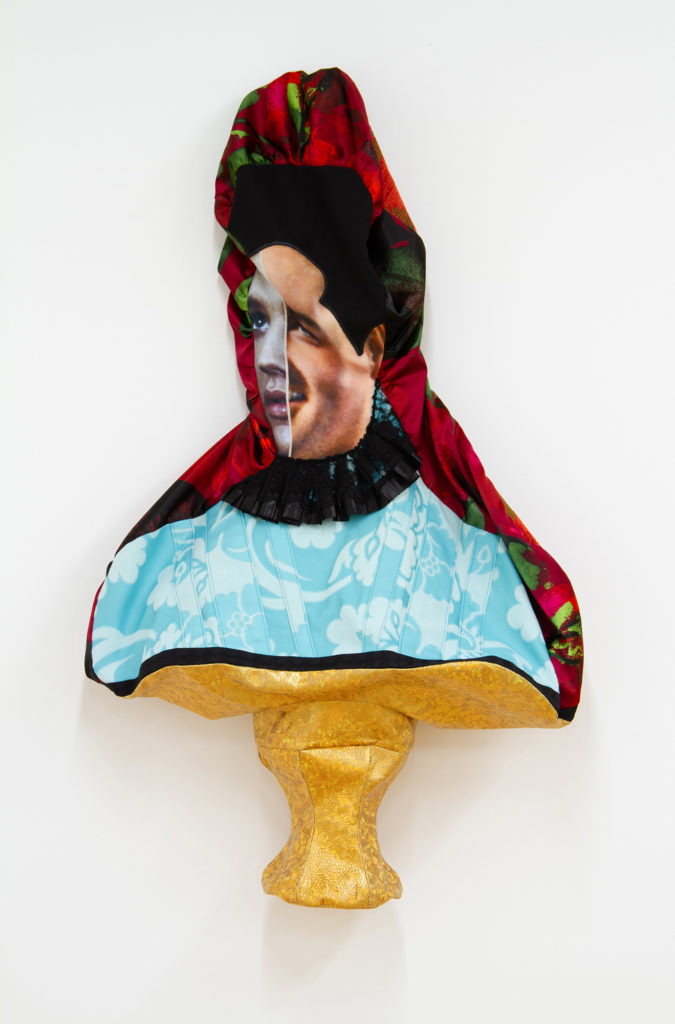
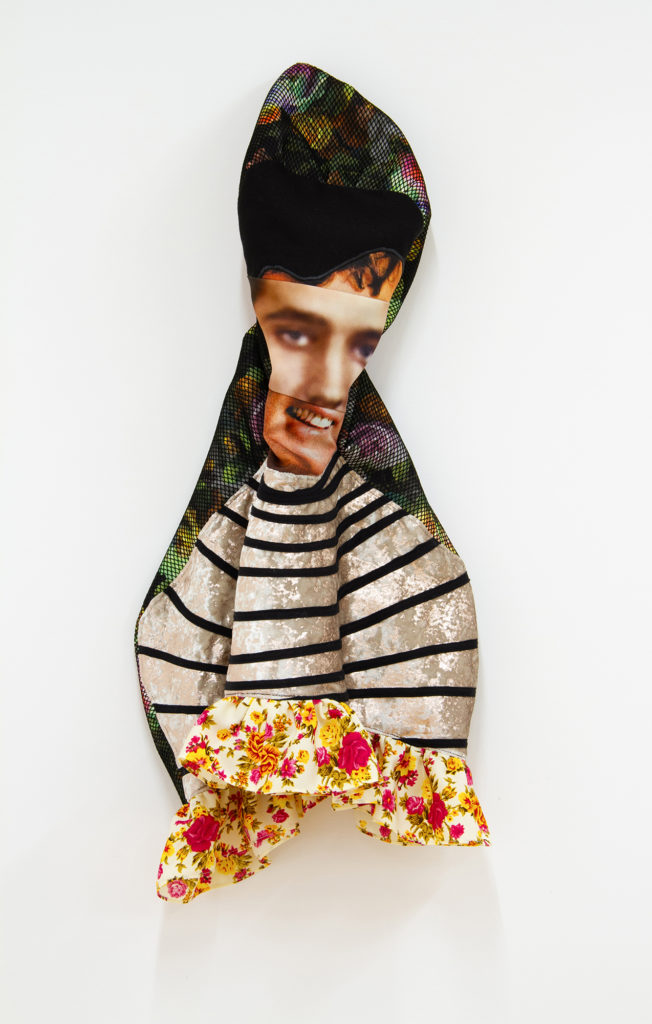
(Left) Graceland, 2020; polyester, wool, satin, lace; 39 x 15 x 8 in. (Center) Knave, 2019; wool, polyester, cotton, laminated metallic spandex, chenille brocade, lace trim; 34 x 21 x 9 in. (Right) Tupelo Boy, 2020; polyester, velvet, rayon; 31 x 12 x 8 in.
These sculptures are fetish objects, both in form (the collaged, repeated images of the face; the status implied by the form of the bust) and in the admixture of ornamental high-low textiles (satin, lace, brocade, metallics, velvet, silk, and vinyl, with plain wool and printed polyester). The materials themselves are allegorical, connected as they are to wealth, rank, and sociocultural mores—aspects that Elvis himself paid attention to in his stage costuming.
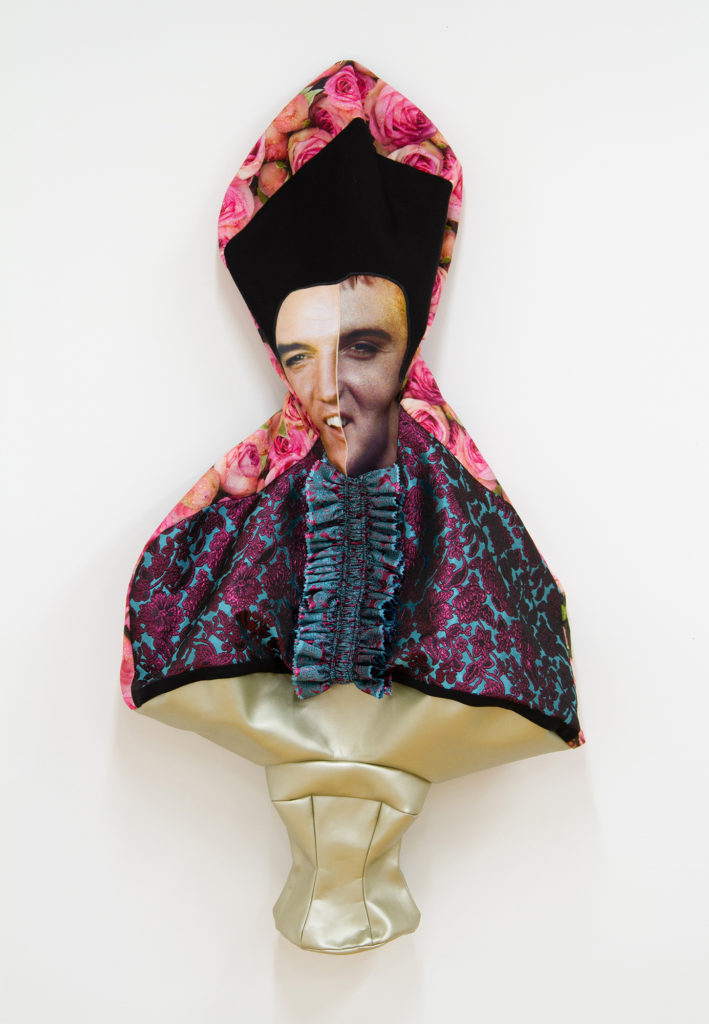
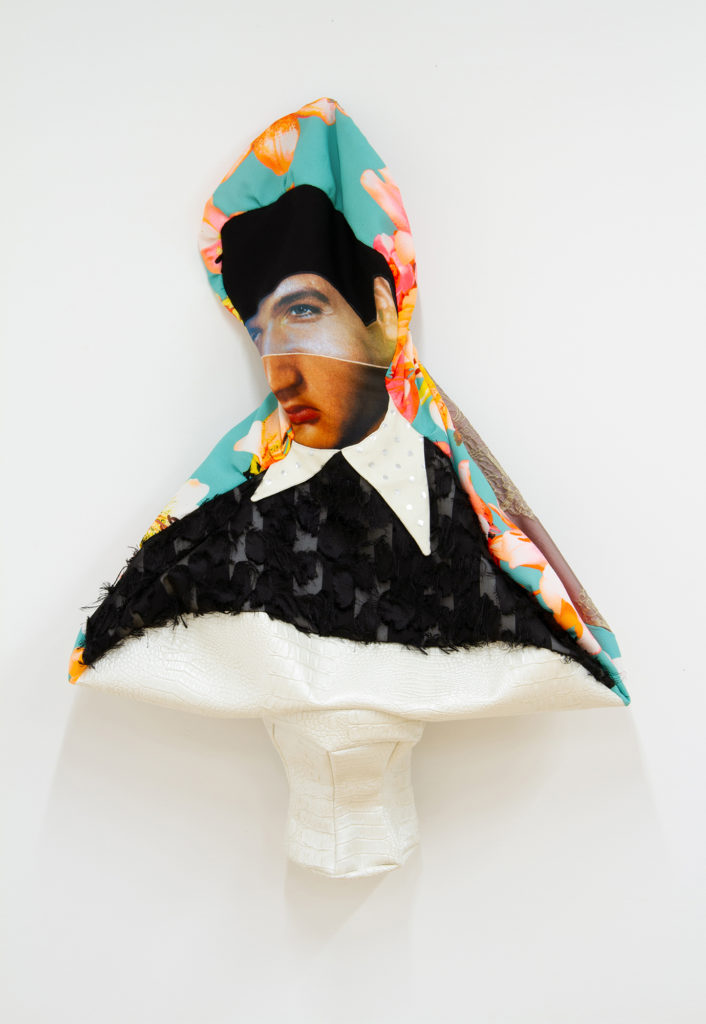
(Left) Thin King, 2019; wool, polyester, cotton, brocade, vinyl; 40 x 20 x 8 in. (Right) Tropicalia, 2019; wool, cotton, polyester, vinyl; 36 x 24 x 8 in.
As I was working on these, I formulated a series of glib ways to try to explicate their particular eccentricities: The Residents album “The King & Eye” reconstructed as soft sculpture; the Elgin Marbles meets Louise Bourgeois meets Looney Tunes; a thirteen-year-old girl playing Elvis in a talent show; and an argument between W.J.T. Mitchell and Tzvetan Todorov in a drag queen’s closet. It was only after I hung them all together that I realized how closely they also represent the burgeoning scholarship on queerness and The King’s own suspected bi- or homosexuality.

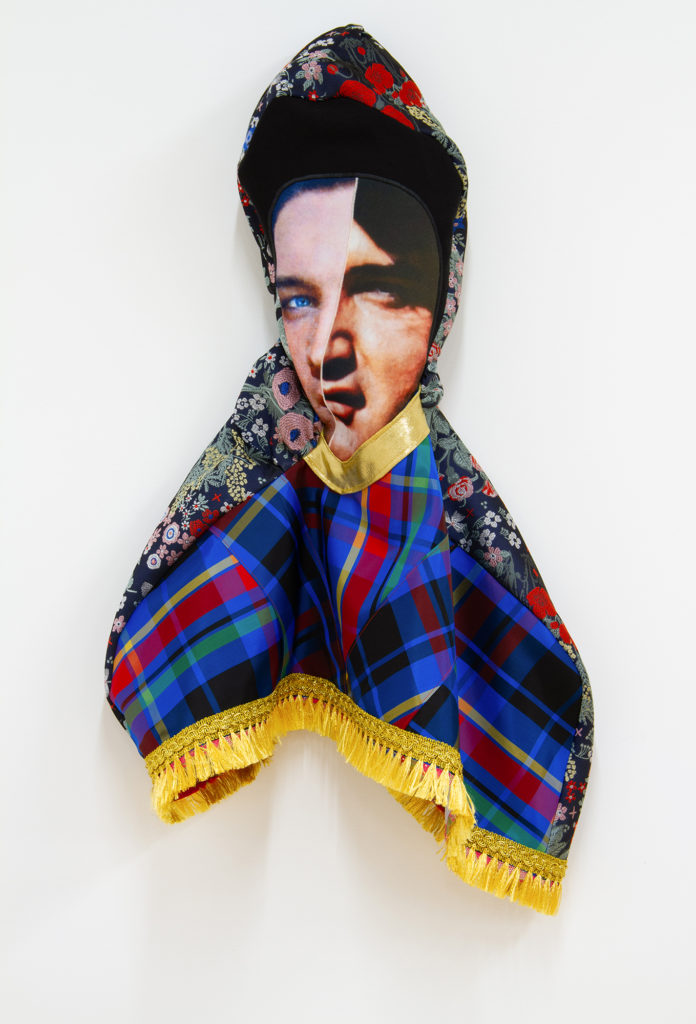
(Left) Bird of Paradise, 2020; polyester, wool, silk, chiffon; 33 x 15 x 6 in. (Right) Blue Eye, 2019; polyester, wool, brocade, taffeta, cotton, metallic mesh, fringe; 29 x 14 x 10 in.
In the busts that have no base, I am also reminded of cast-off costumes and the implication that, for a celebrity, the performance never really ends. Elvis remains an oblique subject, Elvis-as-image, a perpetual allegory, a man who is not allowed to rest.
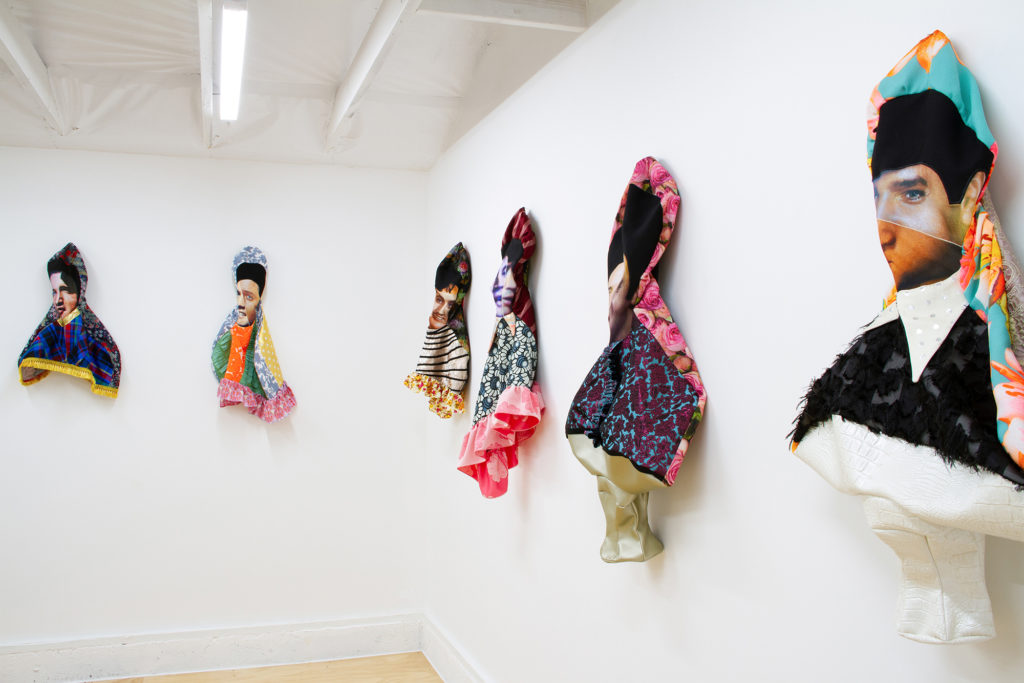
All Shook Up, installation view (side view), 2020.
As a fourth-generation seamstress, Bean Gilsdorf examines the visual traces of political histories and cultural narratives through the evocative medium of cloth. Her projects have been exhibited at the Museum of Contemporary Art Santa Barbara, the Wattis Institute for Contemporary Arts, and the American Textile History Museum, as well as exhibition spaces in England, Italy, China, Poland, Lithuania, Latvia, and South Africa. Gilsdorf’s work is in the permanent collections of the Berkeley Art Museum, Kala Art Institute, and the International Quilt Museum at the University of Nebraska-Lincoln.
Gilsdorf is the recipient of numerous awards, including a Ford Family Foundation Fellowship Residency at Ucross (forthcoming, 2023), an Andy Warhol Foundation Arts Writers Grant (2020), two creative Fulbright Fellowships to Poland (2015–2016 and 2016–2017), a Graduate Fellowship at Headlands Center for the Arts (2011–2012), and a Graduate Full Merit Scholarship to the MFA Fine Arts program at California College of the Arts (2009). She has also been an artist in residence at 18th Street Arts Center and Banff Centre, among others. Gilsdorf holds a BA from Simon’s Rock at Bard College and an MFA from California College of the Arts. She currently lives in Portland, Oregon.